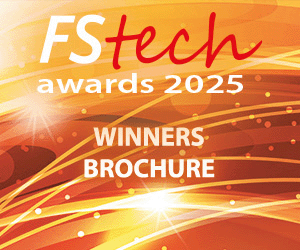
The data underlying both domestic and cross-border payments is undergoing a major upgrade. Across the financial industry, many market infrastructures, as well as SWIFT, are transitioning from MT or various proprietary message formats to the data-rich and highly structured ISO 20022 standard.
With the payment industry’s migration to ISO 20022 fast approaching, Nasir Ahmed, SWIFT’s ISO 20022 adoption programme lead, and a panel of industry experts at Sibos, set out the benefits of adopting the standard and what financial institutions should be thinking about right now.
"We're already starting to see a shift to ISO 20022 in the industry,” said Ahmed. “As the major high-value payment clearing systems, and SWIFT, begin to migrate to this new standard, the time has come for us as participants in the payments industry, to start to plan and execute on strategies to make this migration a success and extract the true value that ISO 20022 can bring, in terms of transparency, efficiency and also the development of new, value-added propositions for customers.”
What challenges does ISO 20022 address?
Christian Fraedrich, Head of Business Architecture, Deutsche Bank, outlined what he sees as the main challenges addressed by ISO 20022: “One of the most relevant pain points is in the reconciliation process for beneficiary customers (e.g., corporates). In existing FIN/MT formats, there is limited space for remittance information, data can be missing, or it is truncated, preventing automation or leading to rejections.”
Fraedrich also noted challenges around compliance controls and the divergence of payments formats: “It’s not easy for us, as banks, or for our clients, to execute cross-border payments and maintain alignment to domestic payments data requirements, because of the various formats used by domestic clearing and settlement systems. With ISO 20022, we will be able to better harmonise and pass the domestic and cross-border payments data, end-to-end, providing more value for our customers.”
Nick Soo, Director, Regional Head of Payment Products GLCM at HSBC, agreed, noting that, for corporates, aside from the inherent efficiency benefits, “better reconciliation means clients can improve their cash flow and because you can apply your cash faster, that facilitates a better top line and even enables growth.”
From a compliance perspective, richer and structured data also offers benefits. It reduces the risk that a payment is incorrectly flagged as fraudulent, limiting the number of false positive sanctions hits that require manual intervention to resolve.
A big opportunity
“Moving to ISO 20022 and having access to that rich data represents a big opportunity for banks to develop new customer propositions,” said Ahmed. “The standard means banks can pass numerous benefits on to their customers.”
“ISO 20022 is a real watershed moment for the industry,” said Soo. “For our institutional clients, it really helps us to help them better serve their end customers.” ISO 20022’s improved data structure removes a number of frictions, around the ultimate debtor field and name and address, for example.”
Fraedrich also noted the efficiency benefits and the route into new technologies: "Rich information, transmitted along the transaction, increases transparency, helps reduce exceptions and investigations and puts us in a position to speed up the process for cross-border payments,” he said. “In addition, the move to ISO 20022 will enable new technologies and the adoption of those technologies into our processes. I think ISO 20022’s structured data format provides a basis to enable API connectivity into the SWIFT universe and to provide the same to our customers.”
Ensuring readiness
The global adoption of ISO 20022 is well underway, with the SWIFT community set to begin making the transition over a three-year period, starting in November 2022. Preparation and training are crucial in ensuring readiness.
“It looks at first glance like a pretty easy change in the message format, but it impacts the entire end-to-end chain,” said Fraedrich. He also pinpointed the significance of aligning operational processes: “Don’t forget to train and bring the operations people up to speed because, particularly at the beginning, we may see a lot of manual intervention points. Also, start testing and preparing as soon as possible and involve all relevant stakeholders.”
Soo highlighted the importance of having a broad, clear vision, as well as a payments strategy, and alignment between IT and operations teams, as well senior management. “We’re ensuring we have the right cadence in terms of our working groups, development and delivery groups, a processing group – particularly looking at the sanctions process and how to tune it – and a commercialisation and a communications working group,” he said.
Looking to the future
Facilitating the industry-wide adoption of ISO 20022 for cross-border payments and reporting is central to SWIFT’s vision for making transactions instant and frictionless. In addition to ISO 20022, Fraedrich noted that “the SWIFT transaction manager, which provides − in a pretty short timeframe − value-added services, will help with this move to frictionless and hopefully instant payments.”
Soo sees an abundance of consumer choice in the near future: It’s definitely going to be an interoperable world and I think SWIFT will remain in pole position; they have fantastic network effects, as well as a track record of delivery. A lot of what SWIFT is building up is meant to be currency agnostic, so they are very well placed. Looking ahead, if you couple the data opportunity presented by ISO20022 with the increasing use of AI, machine-learning and APIs − you’re going to see a lot of data-rich solutions beyond just reconciliations and efficiency,” he said. “I can imagine use-cases which include business matching, new credit scoring models, fraud detection and supply chain management. So, I’m very excited for what the future holds as we strive towards greater innovation and collaboration in the industry.”














Recent Stories